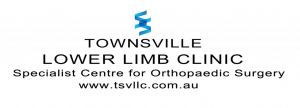Orthopaedic Robotics
In recent times there has been an industry push towards the use of orthopaedic robots. This push has largely been by Stryker who acquired Mako and have married their prosthesis with Mako “ARM” robot. This has been one of the clever marriages I have seen in orthopaedics for some time. Currently the use of this robot is limited to Unicompartmental knee replacement. I gather they are working on a Total Knee and a Hip Module.
Industry sources have confirmed that the use of UKR’s have risen steeply over the last 12-18mths. This is particularly true for institution that has purchased the Robot. The actual figures will soon be released in the AOANJR.
Usually a high volume knee arthroplasty surgeon would perform 10-15% of total Knee arthroplasty load as UKR. The reason for this is that the indications for UKR are tight and the number of patients that strictly qualify for the procedure is as mentioned above, 10-15% of those requiring arthroplasty. If these indications are stretched then the outcomes may be compromised and the revision to TKR would follow.
There is a misguided understanding that the Robot will perform the surgery for you. I have heard surgeons say that the robot will guide me into the correct alignment and position.
Essentially, a robot is an execution tool. It is not a prescription on how to perform replacement surgery. Robotics works of the same basic software that allows a surgeon to perform a navigated total knee replacement. It is a very clever engineering tool that allows surgeon to plan his/her resection level and angles, predicting the alignment and gaps. All the robot does is it takes away the human execution error. Making the bone cuts more accurate.
As most engineering tools there are default settings built into the system and the software will guide you thru the default resection levels and angles. Luckily 70-80% of the population will fall within these defaults and the surgery will be successful 80% of the time. It is the 20% that will suffer as a result of following the engineering default.
At present the knee arthroplasty surgeons are trying very hard to decrease the 20% negative outliers and I think that the rapid introduction of high-end technology in under- trained hands may actually increase the negative outliers.
